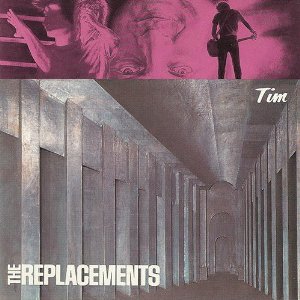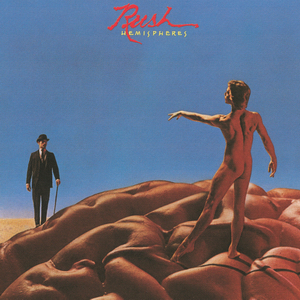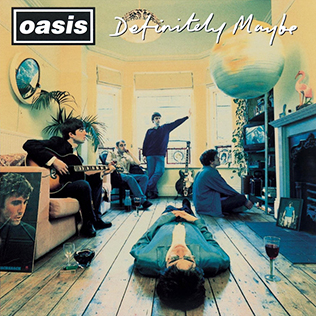Unlike other bands of the time, The Replacements made the leap from indie to major label without losing strength.
Tim may look low-budget on the surface, but Paul Westerberg’s songs continued to improve.
If there’s any complaint with the album, it’s the sound. Originally they wanted to work with Alex Chilton, but ended up finishing it with Tommy Ramone. As great as the songs are, the mix sounds rushed and thin. Still, the overt punk thrashers and speedcore jokes of the Twin/Tone years have been left behind in favor of tighter songs. (If you really want more of the ‘Mats at their sloppiest, The Shit Hits The Fans was a limited-release official bootleg, mastered from a Maxell tape, and made available solely on cassette, with apologies. Most of the songs are covers, aborted mid-strum and incomplete due to lack of interest or memory.)
Tim is loaded with classics, beginning with “Hold My Life” and the Chuck Berry flavors in “I’ll Buy” and “Kiss Me On The Bus” (dig the sleigh bells on the last chorus through the end). Where previous country pastiches were too close to juvenile, “Waitress In The Sky” is as clever as it is well-played, and may sound strange to anyone who doesn’t remember when you could smoke on an airplane. “Bastards Of Young” is another in a series of personal theme songs and musical mission statements. If that’s Bob Stinson playing the solo, it’s one of his best. “Left Of The Dial” manages to celebrate college radio, life on the road and long-distance infatuation via a glorious wall of guitars. Equally empathetic is “Little Mascara”, with a good hook and an initially incongruous but ultimate fitting guitar solo.
The songs chosen to close each side are striking. While both are somewhat losers’ anthems, “Swingin Party” looks for solidarity amidst shared discomfort, while “Here Comes A Regular” underscores that even among daytime drunks, each one is on his own. The instrumentation has a lot to do with the messages. “Party” is a band performance; every now and then Westerberg’s voice sounds like Joe Strummer’s in similar environments, and Tommy Stinson’s bass is particularly inventive here. “Regular” is strummed slowly on a high-capoed acoustic, with only the slightest mournful ornamentation over the fade.
They’re not all winners—“Dose Of Thunder” and “Lay It Down Clown” are loud for the sake of being loud, but serve to elevate its brothers, and are mild blips in what is overall a terrific album. Tim has remained a favorite among fans, and can even be credited for the otherwise mystifying appeal of the Goo Goo Dolls. Chances are Johnny Rzeznik snapped up a copy of the Rhino reissue for the bonus tracks, which included two outtakes of “Can’t Hardly Wait” (one acoustic, one electric; the latter is better), a louder and faster “Kiss Me On The Bus”, and “Nowhere Is My Home”, a terrific track criminally left off the album in the first place.
The thin mix was finally addressed 38 years after the fact with the fourth installment in Rhino’s ongoing Replacements repackaging project. With the original producer (who also mixed) deceased, veteran Ed Stasium was brought in to beef up the sound, and boy, did he. The guitars sound like they’re coming out of larger, better amps, he wiped the murk off various tracks, and you can actually hear the bass. Even “Dose Of Thunder” and “Lay It Down Clown” benefit. (Of course, they also put the new mix and a remaster of the old on separate discs, and shoved a vinyl of the new mix into the package, effectively doubling the list price. Also, the new cover photo and notation as the Let It Bleed Edition—due to a title that was allegedly in the original running for the album—are confusing.)
The obligatory outtakes-and-alternates disc includes everything from the 2008 expansion, plus more songs from an early session with Alex Chilton, a fourth stab at “Can’t Hardly Wait” (this one with cello approximating the parts later played by horns), and a plow through Tommy’s “Having Fun”. A live set recorded in Chicago a week before their infamous Saturday Night Live appearance and two and a half weeks before the gig released in 2017 comprises the fourth CD. It’s a pretty sloppy show, and the sound isn’t pristine, being a blend of the soundboard and an audience tape, but there’s a surprisingly accurate version of “Mr. Whirly” and it’s nice to hear Bob shred when he does. Wacky covers include following “Takin A Ride” with “Hitchin’ A Ride”, “Borstal Breakout” by Sham 69, “Jumpin’ Jack Flash”, and “The Crusher”, an ode to a wrestler originally by a Minneapolis band and recently covered by the Cramps, bellowed by Bob.
The Replacements Tim (1985)—4
2008 CD reissue: same as 1985, plus 6 extra tracks
2023 Let It Bleed Edition: same as 2008, plus 48 extra tracks







.png)
